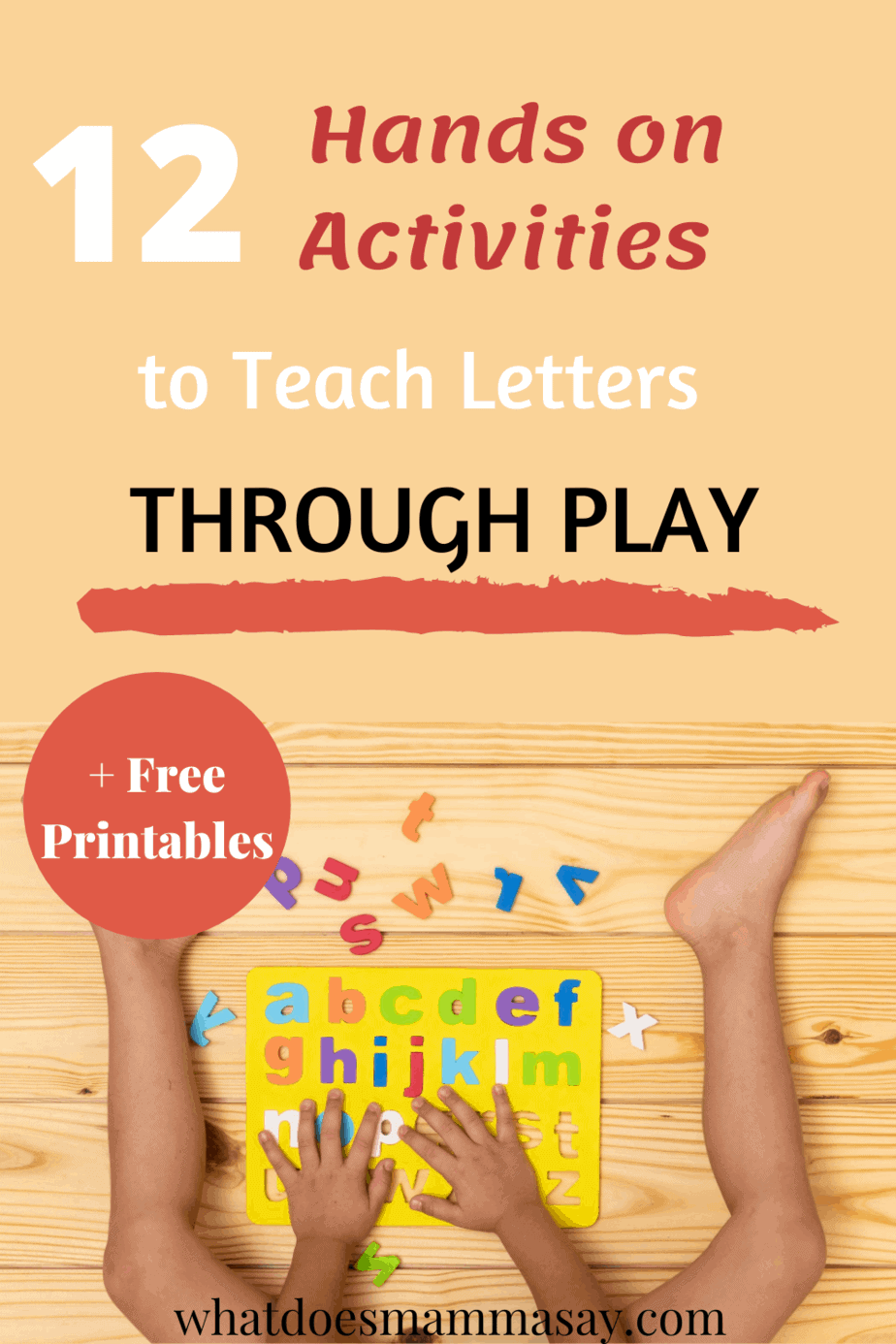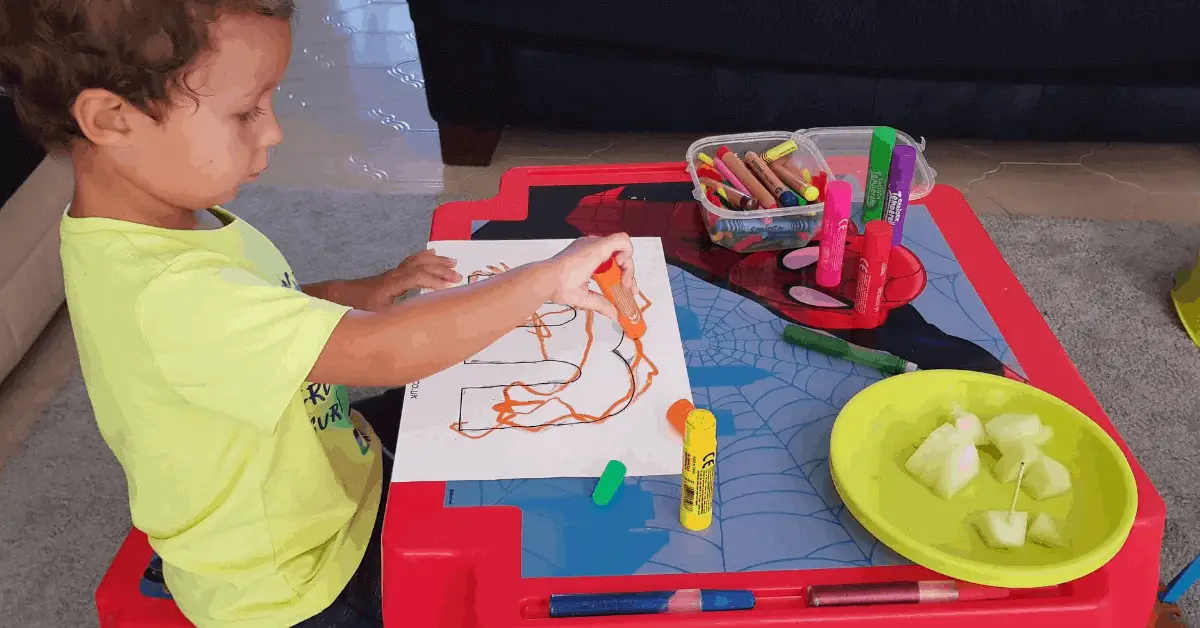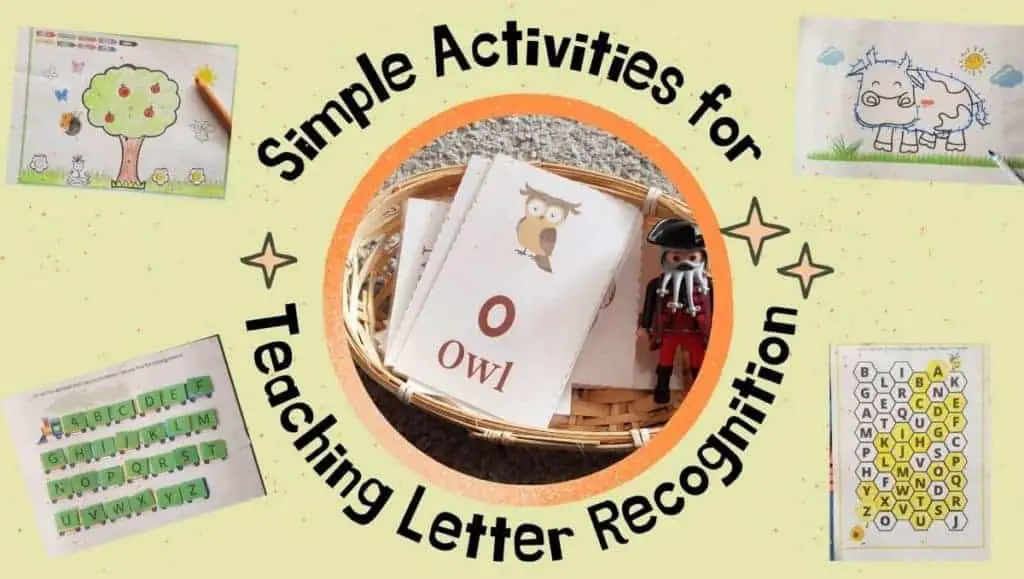In this post, we will explore some of the best ways of teaching letter recognition at home. And because children learn best when having fun, you will discover 12 fantastic games to teach the alphabet as well as five alphabet recognition worksheets (13 pdf files in total) which are FREE to download.
This post may contain affiliate links and I may earn a small commission when you click on the links at no additional cost to you. As an Amazon Affiliate, I earn from qualifying purchases. You can read my full disclosure here.

How to teach letters at home
You notice that your child got to the point at which s/he manifests interest towards the written word. That’s great! That means you can start teaching the alphabet and having some ABC fun.
But what is the best way to teach the alphabet? Is there a certain order in which letters should be introduced? Is there a preferred method when teaching kids the alphabet?
The answer to the first question is simple: KEEP IT FUN. Incorporate songs and chants about the alphabet in your routine, read books, play sensory games with letters, do puzzles, arts and crafts, make full use of all the free alphabet printables out there and generally make the child aware of the written words around him.
Also, when planning the activities for teaching alphabet recognition to your child it would be a good idea to keep in mind your child’s learning style and tailor the activities accordingly.
As to the second question, there isn’t an exact answer. When teaching the alphabet to your child you may choose to introduce the letters in order. You can choose to introduce one letter a day or multiple letters a day. You can choose to practice one letter for a few days. It’s really up to you and there isn’t a magic recipe that will work for everyone. Simply take into consideration
However, the preferred way is introducing letters, as well as their phonetic sound, in 6 phases of 4-5 letters at a time. Try to include the letters that will allow the child to form short words in the first sets. An example of the order in which you can introduce the letters and their sound is:
- First set: m s a t
- Second set: b f o x
- Third set: w i g l j
- Fourth set: c u p z
- Fifth set: h e n r d
- Sixth set: v k q y
But remember, you can play around with the order, as this is just a suggestion. You may choose to introduce the letters that form your child’s name in the first sets.
As to the best method when teaching letter recognition, again, there isn’t a straightforward answer. Personally, I am in love with the Montessori method. Some of the characteristics of his method are that:
- They introduce the letters by theirs sounds rather than calling them by their names (this will help children form and read words easier)
- They introduce lowercase letters first (the logic behind this is that they see more lower case letters in a book for example than uppercase)
- Some Montessori schools will choose to work with cursive letters first as they are easier to trace
- They use a lot of sensory experiences when teaching the alphabet.
Whatever method or order you choose remember to always tailor your activities according to your child’s level and preferences.
Fun Activities to support alphabet recognition
Here are some letter recognition ideas to support you when teaching letters to your child. All the activities are aimed at children who are in Stage 1 of their Literacy Development and focus mainly on alphabet recognition rather than writing or reading.
1. Alphabet Matching with bottle caps

Do you have some bottle caps lying around? 26 bottle caps to be more exact. I have hoarded bottle caps recently because there are so many DIY activities that can be done with them. If you don´t have the patience to gather them, don´t worry, you can buy the bottle caps.
One such fun activity is Alphabet Matching. Here is what you have to do:
- Draw 26 circles on a big piece of paper (I glued 2 A4 pieces of paper together).
- Inside each circle, I wrote the letters in pencil. The reason why I’ve written them in pencil is that I can easily erase and either leave the circles blank or rewrite them in uppercase, lowercase, cursive and so on.
- Take your bottle caps and write a letter on each one.
- The aim of the game is for the child to match the letters on the paper with the ones on the caps. You can name the letters together with your child so they get some practice in.
I love this game because there are many ways of playing. You can practice lowercase, uppercase, cursive letter recognition. You can erase some of the letters on the paper and ask the child to find the bottle caps that correspond to the missing letters. You can erase the letters altogether and encourage your little one to put the letters in order while chanting them. After the child can confidently recognize the letters and their sounds, you can put a picture in the circles on the paper and ask the child to pick the cap with the letter with which each picture starts.
2. Arts and Crafts with Letters

Most kids love painting, colouring, decorating and making things. So, naturally, a fun way of teaching kids the alphabet is by having your little artist decorate each letter. You can use play dough, stickers, glitter, paint, pom-poms to mention just a few. Let their imagination fly.

